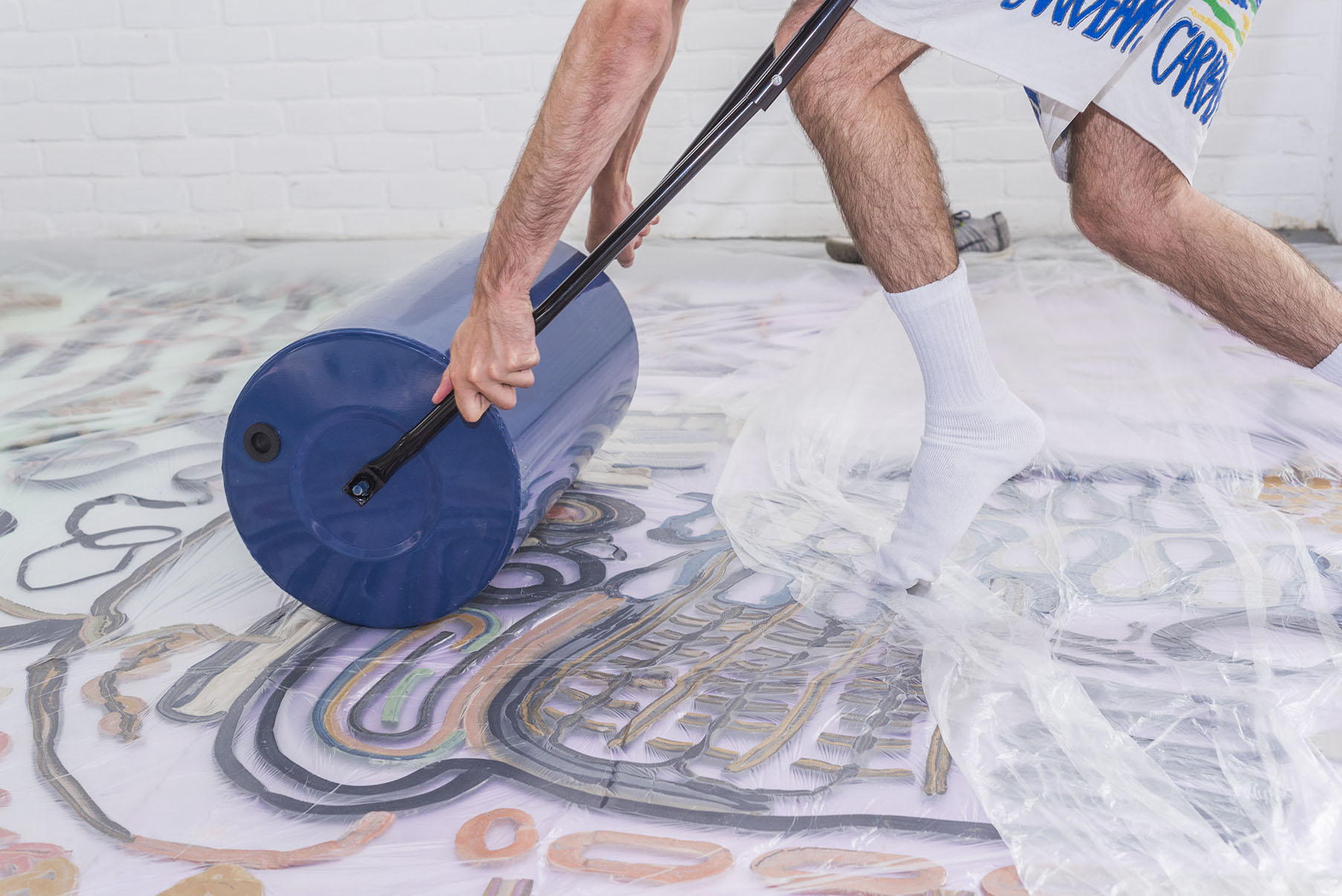Why only 24 hours?
It is just a great way to do it: you play and create for 24 hours. It is a frame of time which creates this freedom where anything is possible for that amount of time. It’s just a game for 24 hours then the ‘real world’ kicks in again.
“We noticed the enormous pressure that society imposes on students but also the pressure that students impose upon themselves.”
What kind of projects do your students usually come up with?
We noticed the enormous pressure that society imposes on students but also the pressure that students impose upon themselves. They feel that everything they make needs be amazing and successful right away. We noticed this with designers and artists in the professional field as well. You also see it in their attitude, they are literally tense all the time. Very often we see that students do not dare to dive into the process all the way, they are afraid to fail. But failure is inevitable and of great value! Just like a game you play! The idea is to experiment and to see that the experience of making and creating doesn’t need to have a direct outcome.
It is important not only to teach the students the skills of the profession. But also to work from and with the student and motivate their strengths and interests. Students are often not even aware of the possibilities. Because there is already an existing, traditional model that they think they have to conform to whereas it is the new generation that needs to introduce innovation and dare to step outside the existing systems and models: To REframe, REview, REmake, REdo, REflect instead of REproduce.
How can people participate?
This year we are aiming for four editions. Now it works through word of mouth. After each edition, we ask the participant to ‘pass the baton’ and make a suggestion for a participant they would like to invite. In this way, we hope to build a rhizomatic community (a root that grows and stems into other plants), a fluid system for tutors as well as for participants. Which grows along the way. We strive to create an ongoing and ever-growing archipelago. We want each edition to complement the next, but that they can also be seen independently, as successive chapters in a book.
What do you think are the biggest benefits and failures of traditional design education?
The value of creative learning process is recognized more and more which is great, also outside the art and design schools and practices. It affects all aspects of a person’s daily life; how you live, how you move, how you exist, what you create and what you believe in and how you share all this.
“It is design that defines us, whether it’s a shoe that ends up modifying the shape of the foot or a cell phone that changes not only our hands but the way our brain functions,” said Beatriz Colomina and Mark Wigley.
But in an ever-changing working environment and capitalist culture, the need for creativity has now become economic: a commodity. There is an intense pressure – from the management layers in design education and the layers above it, from the state to the industry – that everything must be measurable. Like many in our field, we see creativity being smothered by a zeitgeist that leans heavily on effectiveness, measurability, appearance, marketing, feasibility and haste. All these things can be stifling for the creative process.
The world of commerce is starting to pay attention to the stifling that is occurring too. This can be dangerous as well because the design profession is too important to leave it up to the market and marketing alone. We have to take back creativity to be able to move forward.
“we see creativity being smothered by a zeitgeist that leans heavily on effectiveness, measurability, appearance, marketing, feasibility and haste.”
Do you hope your approach to design will help change the system?
The most important thing for SHIFT is to create an Interzone, a parallel playground. A collaborative effort to explore playfully different methods and future(s). And if this could help to make changes – from the small level of learning and exploring, to the big impact of scaling and embedding – that would be great. But first: let’s play!
We want people to enjoy the creative learning process for what it is: the experience of creating ‘in the moment’ together.
What’s the biggest advice you have for design students?
To playfully improvise and dare to be unproductive!












